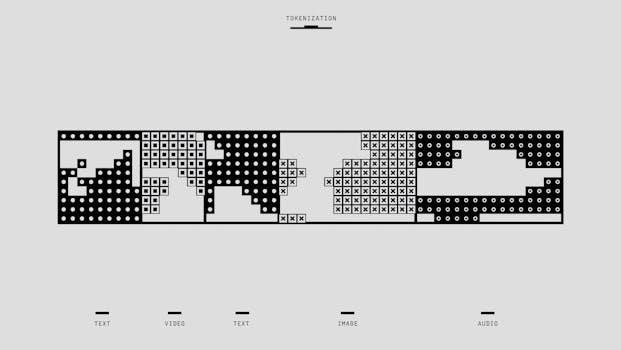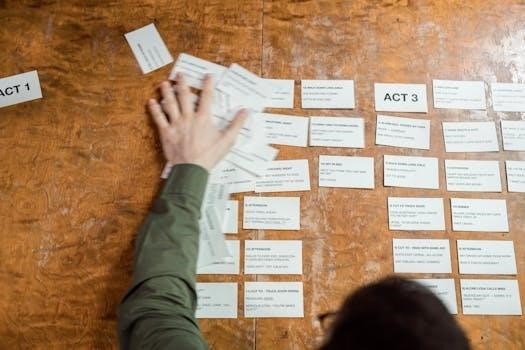IMSE Scope and Sequence PDF⁚ An Overview
The IMSE Scope and Sequence PDF provides educators with a structured framework. It covers essential reading skills, aligning with research-based practices. This PDF offers a roadmap for effective literacy instruction.
The Institute for Multi-Sensory Education (IMSE) champions the Orton-Gillingham (OG) approach, a research-backed methodology for literacy instruction. IMSE’s Comprehensive OG empowers teachers to bridge the gap between theory and practice, teaching reading the way science informs us the brain learns. This approach focuses on structured, sequential, and explicit phonics instruction. It is designed to address the needs of all learners, particularly those with reading difficulties. IMSE provides educators with the tools and knowledge to effectively implement OG principles. The training ensures teachers can deliver systematic and multi-sensory lessons. This enables students to develop strong foundational reading skills. The updated scope and sequence introduces easier sounds first, building student confidence. The program progresses to writing words after four weeks and sentences after nine weeks.
The Importance of Scope and Sequence in Literacy Instruction
A well-defined scope and sequence is critical for effective literacy instruction. It provides a structured roadmap, ensuring systematic skill development. The IMSE scope and sequence carefully aligns instructional content, skills, and assessment. This alignment informs literacy instruction to include systematic, year-long plans for phonics instruction that are sequential, direct, explicit, cumulative and multimodal to align teachers delivery of instruction. A clear scope outlines the specific concepts and skills to be taught at each grade level. The sequence dictates the order in which these skills are introduced. This ensures that foundational concepts are mastered before moving on to more complex ones. This systematic approach prevents gaps in learning and promotes long-term retention. It also allows teachers to monitor student progress and adjust instruction accordingly. Without a scope and sequence, instruction can become haphazard and ineffective, hindering student growth;

Understanding the IMSE Scope and Sequence
The IMSE Scope and Sequence provides a structured approach to literacy. It ensures systematic phonics instruction. It employs a multimodal learning approach. The sequence carefully aligns instruction.
Alignment with TEKS and ELPS
The IMSE’s Comprehensive Orton-Gillingham program demonstrates a strong alignment with both the Texas Essential Knowledge and Skills (TEKS) and English Language Proficiency Standards (ELPS). This alignment ensures that educators using the IMSE approach are effectively addressing the specific learning objectives and language development needs of students in Texas. The program’s scope and sequence are carefully designed to incorporate the required knowledge and skills outlined in the TEKS, providing a structured framework for literacy instruction that meets state standards.
Furthermore, the alignment with ELPS supports English language learners by integrating strategies and activities that promote language acquisition and academic success. This dual alignment empowers teachers to provide targeted and effective instruction that caters to the diverse needs of their students, ensuring that all learners have the opportunity to achieve literacy proficiency. The IMSE approach considers the linguistic and academic demands placed on students, fostering a comprehensive and inclusive learning environment.
Systematic Phonics Instruction
IMSE’s scope and sequence emphasizes systematic phonics instruction as a cornerstone of its approach. The program provides a carefully planned, sequential, direct, explicit, cumulative, and multimodal framework for teaching phonics skills. This systematic approach ensures that students receive instruction in a logical and organized manner, building a strong foundation in phonics. The sequence introduces easier sounds and concepts first, allowing students to gain confidence and mastery before progressing to more complex skills.
Through consistent practice and review, students develop the ability to decode and encode words accurately and efficiently. The program incorporates various activities and strategies to engage students and reinforce their understanding of phonics principles. This systematic approach allows teachers to effectively deliver instruction, monitor student progress, and adjust their teaching as needed, maximizing student success in reading and spelling.
Multimodal Learning Approach
IMSE’s scope and sequence incorporates a multimodal learning approach to cater to diverse learning styles and enhance comprehension. This approach integrates visual, auditory, and kinesthetic activities to engage students and reinforce learning. Through visual aids like charts and diagrams, students can see the relationships between sounds and letters. Auditory activities, such as listening to and repeating sounds, help students develop phonemic awareness.
Kinesthetic activities, like using manipulatives and movement, provide hands-on experiences that solidify understanding. By combining these modalities, IMSE’s approach ensures that students can access and process information in a way that best suits their individual needs. This multimodal strategy maximizes engagement and promotes deeper, more lasting learning, empowering students to become confident and successful readers and spellers.

Key Features of IMSE’s Scope and Sequence
IMSE’s scope and sequence prioritizes easier sounds initially, building student confidence. It systematically progresses to word and sentence construction. High-frequency words are integrated to enhance reading fluency and comprehension.
The IMSE Comprehensive Orton-Gillingham Plus program employs a strategic approach by introducing easier sounds at the outset. This deliberate sequencing is designed to foster early success and boost student confidence. By mastering foundational phonetic elements, students build a solid base for more complex reading skills. This method ensures that learners experience initial wins, motivating them to engage further with the material. The updated scope and sequence reflects IMSE’s commitment to creating an accessible and effective learning experience. Starting with manageable concepts reduces frustration and encourages a positive attitude toward reading acquisition. This carefully planned introduction sets the stage for continuous progress and reading proficiency.
Progression to Writing Words and Sentences
Following the introduction of easier sounds, the IMSE program strategically progresses to writing words and sentences. After approximately four weeks, students begin constructing simple words, reinforcing their phonetic understanding. By the ninth week, the curriculum advances to sentence writing, enabling students to apply their knowledge in a more complex context. This gradual progression ensures students solidify skills at each stage before moving forward. The structured approach builds confidence and reinforces learning through practical application. This progression seamlessly connects decoding with encoding, promoting comprehensive literacy development. The IMSE method emphasizes the importance of actively engaging with language, ensuring skills are strengthened.
Integration of High-Frequency Words
The IMSE scope and sequence incorporates high-frequency words strategically throughout its program. These words, often referred to as “red words,” are essential for fluency and comprehension. Their frequent appearance in texts necessitates early and consistent instruction. The IMSE approach integrates these words from the beginning, ensuring that students encounter and practice them regularly. This repeated exposure aids in memorization and automaticity, allowing students to recognize these words instantly. As students progress, the program continues to reinforce these high-frequency words in various contexts, strengthening their overall reading and writing abilities. The purposeful integration supports reading fluency, which is crucial for overall comprehension and reading success.

Resources and Tools Aligned with IMSE
IMSE offers various resources, including teacher guides and aligned decodables. These tools support educators in implementing the IMSE approach. The training manual further enhances understanding and application of the methodology.
IMSE Teacher Guides
IMSE Teacher Guides offer a detailed scope and sequence. These guides assist teachers in addressing individual student needs based on IMSE benchmark assessments within the IMSE Training Manual. The foreword guides teachers on instructional starting points, while designated sections facilitate review.
These guides feature a meticulously aligned instructional content, skills, and assessments, informing comprehensive literacy instruction. They provide systematic, year-long phonics plans that are sequential, direct, explicit, cumulative, and multimodal, ensuring consistent and effective delivery.
Furthermore, the Teacher Guides empower educators to bridge the gap between theory and practice. They provide a framework for implementing evidence-based strategies in the classroom, promoting reading success for all students.
Aligned Decodables
Aligned Decodables play a crucial role in reinforcing skills taught through the IMSE scope and sequence. These decodables provide students with opportunities to practice and master phonics concepts and high-frequency words. IMSE’s Aligned Decodables help students monitor their progress as well!
These carefully crafted books ensure students practice skills introduced each week, building upon prior knowledge. The decodables are designed with specific endings based on the IMSE scope and sequence.
By using Aligned Decodables, educators can effectively support students’ reading development and enhance their confidence. These decodables offer a bridge between explicit instruction and independent reading, solidifying learning and fostering a love for reading.
IMSE Training Manual
The IMSE Training Manual serves as a comprehensive resource for educators implementing the IMSE approach. It provides detailed guidance on effectively utilizing the IMSE scope and sequence. The manual includes valuable information on assessment, instruction, and intervention strategies.
Within the IMSE Training Manual, teachers will find benchmark assessments aligned with the scope and sequence. These assessments help educators identify students’ strengths and weaknesses. Furthermore, the manual offers practical strategies for addressing reading weaknesses and tailoring instruction to meet individual needs.
By utilizing the IMSE Training Manual, educators can gain the knowledge and tools. They will be empowered to implement the IMSE approach effectively and support all students’ literacy development.

Benefits of Using the IMSE Approach
The IMSE approach bridges theory and practice in literacy instruction. It empowers teachers with research-backed strategies. IMSE effectively addresses reading weaknesses and promotes reading excellence for all students.
Bridging the Gap Between Theory and Practice
The IMSE approach excels at bridging the gap between theoretical knowledge and practical application in literacy education. Informed by evidence and research, IMSE empowers educators to translate research findings into effective classroom strategies. The comprehensive Orton-Gillingham methodology provides teachers with the tools and knowledge necessary to implement evidence-based practices. This practical approach ensures that teachers can confidently apply their understanding of how the brain learns to read. IMSE’s resources, including teacher guides and training manuals, further facilitate this transition. Teachers can confidently implement effective literacy instruction, informed by both theory and practical application. This results in improved reading outcomes for their students by bridging the gap.
Empowering Teachers
The IMSE approach is designed to empower teachers by providing them with the resources and training needed to confidently deliver effective literacy instruction. The Comprehensive Orton-Gillingham methodology equips teachers with a deep understanding of the science of reading. This knowledge enables them to make informed decisions about their teaching practices. IMSE provides teachers with a structured scope and sequence, along with aligned resources such as teacher guides and decodable readers. These resources provide teachers with the tools to support their students’ reading development. IMSE training also helps teachers understand how to assess student progress and adjust their instruction accordingly. By empowering teachers, IMSE helps them transform lives.
Addressing Reading Weaknesses
The IMSE approach directly addresses reading weaknesses by providing a structured and systematic intervention program. It is designed to target the specific needs of struggling readers. The program’s scope and sequence introduces concepts in a carefully planned order, building a strong foundation in phonics and decoding skills. IMSE provides teachers with the tools to identify and address individual student needs. It offers a multi-sensory approach to learning, engaging students through visual, auditory, and kinesthetic modalities. The use of aligned decodable readers allows students to practice their skills. This is done in a controlled and supportive environment, building confidence and fluency. The IMSE approach strives to ensure all students achieve reading success.
